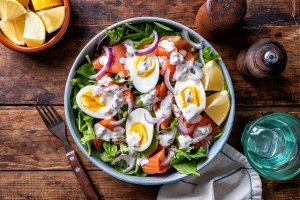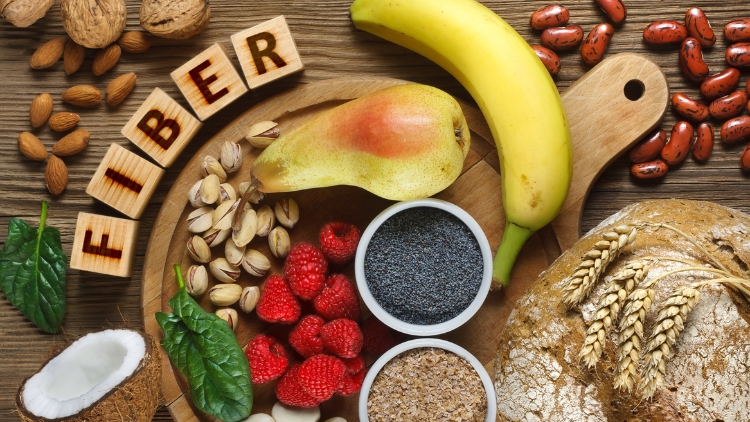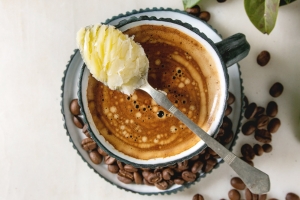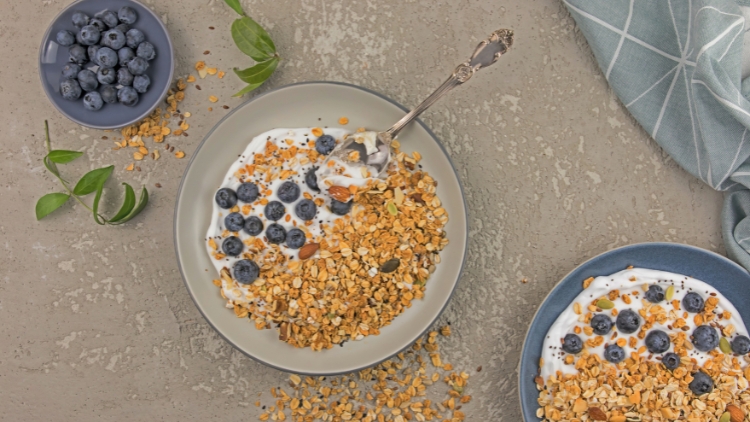It’s remarkable how something so small can hold such incredible potential. We’re talking about chia seeds, those tiny nutritional powerhouses that have been quietly revolutionizing diets for centuries. Once a staple for the ancient Aztecs and Mayans, chia seeds are making a resurgence, and with good reason. Brimming with fiber, protein, and omega-3 fatty acids, these little seeds offer a range of health benefits, especially for those managing diabetes.
But how can you seamlessly weave these tiny wonders into your everyday routine? Let’s explore five creative and delicious ways to harness the power of chia seeds for diabetes management.
Chia Seeds and Diabetes: A Powerful Synergy

Before we delve into the “how,” it’s crucial to grasp the “why.” Why are chia seeds so beneficial for individuals with diabetes? The answer lies in their unique nutritional composition.
The Fiber Advantage
Chia seeds are an excellent source of dietary fiber, both soluble and insoluble. This fiber acts like a sponge in your digestive system, slowing down the absorption of sugar into the bloodstream. This gradual release of sugar helps prevent those dreaded blood sugar spikes that can be particularly challenging for individuals with diabetes.
A study published in the British Journal of Nutrition found that incorporating chia seeds into a meal significantly reduced post-meal blood sugar levels in individuals with type 2 diabetes. The researchers attributed this effect to the high fiber content of the seeds, which helped regulate the body’s glucose response.
Omega-3 Fatty Acids and Insulin Sensitivity
Chia seeds are also rich in omega-3 fatty acids, particularly alpha-linolenic acid (ALA). These healthy fats play a crucial role in improving insulin sensitivity, which is key to managing blood sugar levels.
Imagine your cells have doorways for glucose to enter, and insulin is the key that unlocks these doors. When cells become resistant to insulin, it’s as if the key no longer fits the lock, and glucose builds up in your bloodstream. Omega-3 fatty acids, in essence, help “lubricate the lock,” improving insulin sensitivity and allowing glucose to enter your cells more efficiently. This smoother entry helps maintain balanced blood sugar levels and reduces the strain on your body.
Protein Power for Sustained Energy
Protein, another vital nutrient found abundantly in chia seeds, helps stabilize blood sugar levels and provides sustained energy, preventing those energy crashes that can often lead to cravings and overeating.
Think of protein as a slow-burning fuel that keeps your energy levels steady throughout the day, unlike the quick burst of energy followed by a slump that you might experience from refined carbohydrates.
5 Creative Ways to Use Chia Seeds in Your Diabetic Diet
Now that you understand the powerful benefits of chia seeds for diabetes management let’s explore some creative and delicious ways to incorporate them into your daily diet.
1. Chia Seed Pudding: A Versatile and Delicious Treat

Chia seed pudding is a simple yet incredibly versatile dish that can be enjoyed for breakfast, dessert, or even a healthy snack. The basic recipe involves combining chia seeds with your choice of milk (almond, coconut, or dairy) and letting it sit in the refrigerator for a few hours or overnight until it forms a pudding-like consistency.
Here’s where the fun begins! You can customize your chia seed pudding with endless flavor combinations. Add fresh fruits like berries or bananas, a sprinkle of cinnamon, a dollop of nut butter, or even a drizzle of honey or maple syrup (in moderation, of course!).
2. Chia Seed Jam: A Healthier Twist on a Classic

If you have a sweet tooth, you’ll love this healthier alternative to traditional jam. Chia seed jam is made with fresh fruit, a touch of sweetener (like honey or maple syrup), and chia seeds, which act as a natural thickener.
Simply cook your favorite fruit with a bit of water and sweetener until it softens, then stir in some chia seeds and let it cool. The chia seeds will absorb the liquid and create a jam-like consistency.
Try this: Spread your homemade chia seed jam on whole-grain toast, use it as a topping for yogurt or oatmeal, or even swirl it into your chia seed pudding for an extra burst of flavor.
3. Chia Seed Smoothies: A Nutritional Powerhouse

Adding chia seeds to your smoothies is a fantastic way to boost their nutritional value and add a satisfying thickness. The chia seeds blend seamlessly into the smoothie, adding a subtle nutty flavor and a boost of fiber, protein, and omega-3s.
Experiment with different flavor combinations: Try a green smoothie with spinach, banana, and chia seeds, or a berry smoothie with mixed berries, almond milk, and a scoop of protein powder. The possibilities are endless!
Pro Tip: Add the chia seeds to your smoothie towards the end of blending. This prevents them from being over-processed, which can create a slimy texture. By adding them last, they retain their pleasant texture and disperse evenly for the best consistency.
4. Chia Seed Egg Replacement: A Vegan-Friendly Baking Solution

Did you know that chia seeds can be used as an egg replacement in baking? When mixed with water, chia seeds form a gel that can bind ingredients together, similar to eggs. This makes them a great option for vegan baking or for those with egg allergies.
To make a chia seed egg replacement, simply combine 1 tablespoon of chia seeds with 3 tablespoons of water and let it sit for a few minutes until it forms a gel. This mixture can replace one egg in most baking recipes.
Important Note: While chia seeds offer a good binding solution, they may not provide the same rise or fluffiness as eggs in baked goods. The final texture might be slightly denser or more crumbly. For recipes where leavening is crucial, consider combining chia seeds with other egg replacements like applesauce or mashed banana for optimal results.
Try it out: Use chia seed eggs in your favorite muffin, pancake, or quick bread recipes for a healthier and more inclusive twist.
5. Chia Seed Crackers: A Crunchy and Satisfying Snack

Chia seed crackers are a delicious and healthy snack that you can easily make at home. They’re perfect for satisfying those crunchy cravings without the added sugars and unhealthy fats found in many store-bought crackers.
To make chia seed crackers, combine almond flour, chia seeds, and your favorite seasonings in a bowl. Add water and knead until a dough forms. Roll out the dough, cut it into desired shapes, and bake until crispy.
Get creative with your flavors: Add herbs like rosemary or thyme, spices like garlic powder or paprika, or even grated cheese for a savory twist.
Incorporating Chia Seeds into Your Daily Routine

While these five ideas offer a great starting point, the beauty of chia seeds lies in their versatility. Here are a few more ways to seamlessly integrate them into your daily routine:
- Sprinkle on Salads: Add a tablespoon of chia seeds to your salads for extra crunch and nutrition.
- Mix into Yogurt: Stir a spoonful of chia seeds into your yogurt or overnight oats for a fiber boost.
- Add to Soups and Stews: Chia seeds can be added to soups and stews as a thickener and to enhance the nutritional value.
- Make Chia Seed Bread: Incorporate chia seeds into your favorite bread recipes for added fiber and a subtle nutty flavor.
- Create a Chia Seed “Egg Wash”: Mix chia seeds with water to create a glossy “egg wash” for pastries and breads. This wash, while not identical to a traditional egg wash, helps to create a beautiful golden brown finish and adds a subtle nutty flavor.
Remember: Start with small amounts of chia seeds and gradually increase your intake to allow your body to adjust. It’s also crucial to drink plenty of water throughout the day, as chia seeds absorb liquid and can contribute to dehydration if you’re not adequately hydrated.
Chia Seeds and Medication Interactions
While chia seeds are generally safe for most people, it’s essential to be aware of potential interactions with certain medications.
- Blood Thinners: Chia seeds are rich in omega-3 fatty acids, which can have a mild blood-thinning effect. If you’re taking blood thinners like warfarin (Coumadin), talk to your doctor before adding significant amounts of chia seeds to your diet.
- Blood Sugar-Lowering Medications: Since chia seeds can help lower blood sugar levels, combining them with blood sugar-lowering medications may increase the risk of hypoglycemia (low blood sugar). Monitor your blood sugar levels closely and consult your doctor if you have any concerns.
Choosing and Storing Chia Seeds
Chia seeds are readily available in most grocery stores and health food stores. When purchasing chia seeds, look for:
- Whole Seeds: Choose whole chia seeds over ground chia seeds, as whole seeds have a longer shelf life and retain their nutrients better.
- Organic Certification: Opt for organic chia seeds to avoid potential pesticide residues.
- Reputable Brands: Select chia seeds from reputable brands that prioritize quality and sustainability.
Storage: Store chia seeds in an airtight container in a cool, dark place. Properly stored chia seeds can last for several years.
Beyond Diabetes: The Wider Benefits of Chia Seeds

While this article focuses on the benefits of chia seeds for diabetes, it’s worth noting that these tiny seeds offer a wide range of health benefits for everyone. They can contribute to:
- Improved Heart Health: The omega-3 fatty acids in chia seeds can help lower cholesterol and blood pressure, reducing the risk of heart disease.
- Enhanced Digestive Health: The high fiber content of chia seeds promotes regular bowel movements and supports a healthy gut microbiome.
- Weight Management: Chia seeds can help with weight management by promoting feelings of fullness and reducing calorie intake.
- Stronger Bones: Chia seeds are a good source of calcium, which is essential for bone health.
- Increased Energy Levels: The combination of fiber, protein, and healthy fats in chia seeds provides sustained energy throughout the day.
From ancient civilizations to modern kitchens, the humble chia seed has proven its worth as a nutritional powerhouse. Incorporating these tiny seeds into your diabetic diet can be a simple yet powerful step towards better blood sugar control, improved overall health, and a more vibrant life. Remember, every journey begins with a single step, or in this case, a single seed. So why not start your chia seed journey today?
Did you enjoy these creative ways to use chia seeds in your diabetic diet? Save this guide to your favorite health board on Pinterest and share the chia-powered goodness with others!

Resources:
- Chia Seed Consumption and Postprandial Glycemic Response in Type 2 Diabetes Mellitus: A Randomized Controlled Trial
- The Effect of Chia Seed Intake on Insulin Sensitivity and Blood Lipid Profile in Healthy Adults
- Chia Seed-Enriched Diet Improves Cardiovascular Risk Factors in Type 2 Diabetes Mellitus
- The Impact of Chia Seed Consumption on Body Composition and Metabolic Markers in Overweight and Obese Individuals
- Chia Seed Supplementation and Its Effect on Glycemic Control and Lipid Profile in Type 2 Diabetes Mellitus







8 Responses
This article is packed with great info! I’ve been trying to find new ways to manage my blood sugar, and chia seeds seem like a game-changer. I’m especially excited about the chia seed jam – I love jam but always worry about the sugar content. One thing I’m curious about, though: does the texture of chia seed pudding take some getting used to? I’m not a huge fan of tapioca pudding, and I’m worried it might be similar. Also, is it true you have to grind them up first? My friend told me they could get stuck in your teeth, haha!
Hi Sarah, thanks for your comment! I’m glad you found the article helpful. Chia seed jam is a delicious and healthy alternative to regular jam, and it is much healthier! As for the texture of chia seed pudding, it’s definitely unique. Some people compare it to tapioca pudding, but it’s generally less “gloopy” and more “gelatinous”. If you are worried about the texture, try blending the pudding after it sets for a smoother consistency. Also, you don’t have to grind them up, the whole seeds work perfectly fine, although, you are right, they might stick to your teeth a little! If you’re still unsure, I recommend starting with a small batch and experimenting with different flavors and mix-ins. You might just discover your new favorite healthy treat!
Okay, I’m sold on chia seeds! But I have a confession: I’m a terrible cook. The chia seed crackers sound amazing, but the recipe seems a bit intimidating. Is there a simpler way to make them, or maybe a brand you recommend that sells them pre-made? Also, you mentioned they can help with weight loss – how many calories are in, like, a tablespoon of chia seeds? And one more thing (sorry for all the questions!): Can I just sprinkle them on everything? Like, my cereal, my salad, even my ice cream? Is that weird? LOL!
Hi Jessica, no worries about the questions – I’m happy to help! I understand that cooking isn’t everyone’s forte. While making chia seed crackers from scratch does involve a few steps, you can find simplified recipes online that use fewer ingredients and require less baking time. As for pre-made options, some health food stores and online retailers sell chia seed crackers. Just be sure to check the ingredient list and choose a brand that’s low in sodium and added sugars. Regarding calories, a tablespoon of chia seeds has around 60-70 calories. And yes, you can totally sprinkle them on everything! Cereal, salad, yogurt – go for it! I’ve never tried it on ice cream but hey, no judgment here! It’s a great way to add a little nutritional boost to your meals and snacks. Just remember to start with a small amount and see how you like it. Enjoy!
Chia seed jam? I’m intrigued, but also slightly terrified. I’m imagining a sticky, gloopy mess. Does it actually taste good, or is it just one of those things you eat because you know it’s good for you? Also, ‘The Fiber Advantage’ sounds like a superhero name. 😂 I’m all for getting more fiber, but I need some reassurance that this jam isn’t going to be a culinary disaster. Anyone actually tried it and can vouch for its deliciousness (or lack thereof)?
Hi Martha! 😂 I totally get your apprehension! But trust me, chia seed jam is surprisingly delicious! It’s not as thick as store-bought jam, more like a compote, but the chia seeds do a great job of thickening it up. The best part is you can control the sweetness, which is great for managing blood sugar. Think of it as a fruit spread with a little extra texture. It’s fantastic on toast or swirled into yogurt. Give it a try with berries – you might be surprised! And yes, ‘The Fiber Advantage’ does sound like a superhero, doesn’t it? Maybe we should give him a cape! 😉
This all sounds wonderful, but I have a hard enough time remembering to take my pills, let alone add chia seeds to everything! Any tips for making this a sustainable habit? And is it really okay to use chia seeds as an egg replacement? I bake a lot, and I’m skeptical that these tiny seeds can hold up in a cake. Also, ‘Protein Power for Sustained Energy’ sounds like a slogan from a 1980s workout video! 😄
Hi Betty! I hear you! It’s all about making it easy. Try keeping a small jar of chia seeds on your counter as a visual reminder. Start small – sprinkle a spoonful on your breakfast cereal or yogurt. As for the egg replacement, it works best in recipes like muffins and quick breads. For cakes, you might need a combination of chia seeds and another egg substitute (like applesauce) for the best results. Don’t expect a perfect 1:1 replacement, but it’s a great option to have! And you’re right, that slogan does sound like it’s straight out of the 80s! Maybe I should add some leg warmers to the mix! 😂 Let me know if you have any other questions!